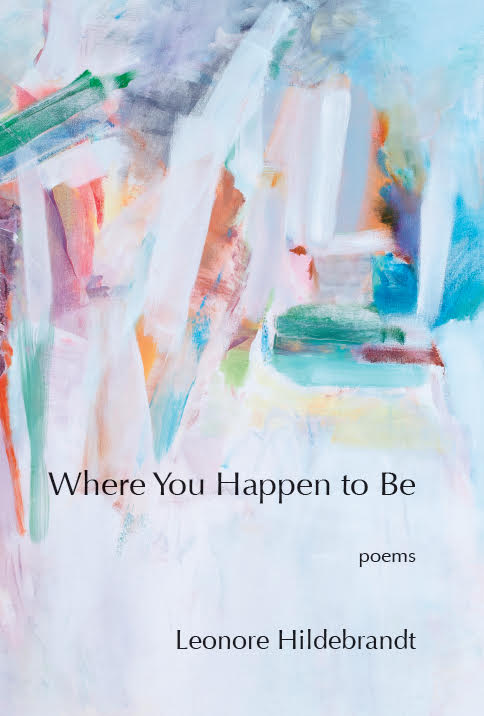Where You Happen to Be
Where You Happen to Be,by Leonore Hildebrandt.
Deerbrook Editions, 2018,
94 pages, paper, $17.29,
ISBN:978-0-9991062-4-2.
In Leonore Hildebrandt’s previous collections, The Next Unknownand The Work at Hand, there is an overwhelming sense of meticulous deliberation in every line. If you want to live in her linguistic world, you have to listen very carefully. Her new collection, Where You Happen to Be, also forces you to look directly into its eyes, but there are differences. It is not gazing in the same directions.
The earlier collections tended to connect themes of personal experience, art, nature, and historical and political realities by exploring their intersections. This new book is centered on the process of centering, and true to the title, location is critical. The first of the book’s four sections sketches places apparently within geographic range of the poet’s home in Down East Maine—“Terminal Moraine,” “Milford Motel,” and “Thinking Potatoes,” for example. “After Learning” begins:
I ran to the margins bordering north
where the land ends and the sea ends.
In the quiet, I could hear my own heartbeat.
You have to pay attention to even simple diction like this: on these “margins” (plural?), the land and sea are both ending, rather than one or the other beginning. Weird. The speaker of this poem seems to be occupying, or seeking, an unlocatable location, and the poem ends “terribly” in doubt. The second section moves from the Northeast to the Southwest, and the location starts getting measured geometrically. The epigraph to “Threshold” says, “Never pitch your camp on the edge of anything,” because, as the poem’s first stanza concludes, “borderlands stir up the uncanny.” A long epigraph by Buckminster Fuller on the importance of learning the Earth’s cardinal directions opens “Where You Happen to Be”—ten nine-line lyrics on desert landscapes and the ways in which your own looking provides a cosmic center, if you can only recognize it. For example:
If Earth is divided
into latitudes and longitudes
you still find a place to sit
boulder overhung with rock
a lizard ventures into sun
your paths are crossing—
networks intersect—or cut
or lie across—and now your dome
elaborates in airy triangles.
There’s a sense that the poet has crossed paths with some elemental confluence of space, time, and consciousness, and there are ways to map it if you can just locate it. A few pages later “Sand Hour Sand,” ten blocks of prose poetry, traces dreamlike points of orientation in historical gold-rush time, e.g.: “On a grave marker we read, ‘Nothing survives except the rock—Geronimo.’” This whole effort to locate herself, history, memory, her mind’s eye, her mind, is given in language that is—if it can be believed—even more meticulous than in her previous collections. The difference is that the linguistic location from phrase to phrase, line to line, stanza to stanza is deliberately disarranged, decentered. The last poem in the book, “Collaboration,” is formed from two literary devices used to simultaneously cohere and fracture the syntax: anaphora, with each of the five stanzas beginning with the word “since,” creating five different conditional clauses; and anapodoton, with the main clause never materializing—the poem is a long fragment; it has no central thought. Even an antecedent for the pronoun “it” in the final line is unavailable:
since half-lives dissipate
and deeper cuts
accrue
the tell-tale body
bearing its abstraction
they work in octaves
interchanging keys
a solo for two hands
since elsewhere
twist and fall
dark-blistered leaves
they find themselves
a table by the window
the field outside
in raptured
slip-codes
since it is turned and open
Concrete reality, music, rapture, abstruse codes and abstractions. The effort to locate a center where the mind has a realizable grip on the depths of reality leads directly to a necessity to decenter what you long mistook for the center. Something in the range of what Robert Graves meant when he spoke of a poem as “an arrangement of thought arrived at by unreason,” and one method for which Rimbaud uncannily described as “le dérèglement de tous les senses.” Spectacular language developed from that insight.
—Dana Wilde


